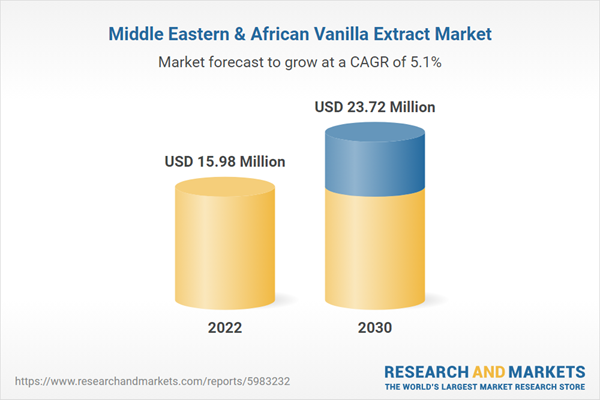High Demand for Organic Vanilla Products Drives Middle East & Africa Vanilla Extract Market
Organic products are cultivated naturally with manure or compost without chemical fertilizers and pesticides. As children are more vulnerable to illnesses caused by pesticide residues in food than adults, parents choose to feed them organic foods. Organic foods are free of growth hormones, genetically modified ingredients (GMI), and antibiotic residues. Thus, the popularity of organic foods has increased among health-conscious consumers owing to the rising awareness of benefits of organic foods. The rising inclination toward organic foods propels demand for organic vanilla extract. Organic vanilla farming comprises eco-friendly agricultural practices that result in higher crop yields. Many organic vanilla farming communities across Madagascar, Tonga, and other vanilla-producing economies follow organic farming practices to produce value-added vanilla products. Organic vanilla farming is challenging due to the stringent farming practices required. However, due to the upsurging demand for organic vanilla, communities across Tonga, Madagascar, and other vanilla-producing economies are undergoing extensive training programs to learn the required agricultural skills. Furthermore, manufacturers of various food products such as ice creams, desserts, cakes, and pastries are increasingly employing organic vanilla to ensure offering of sustainable products free of added sugars, genetically modified organisms (GMOs), or any other questionable ingredients. Organic products offer a significant competitive advantage to vanilla extract manufacturers, enhancing their brand awareness and profitability. Thus, the rising demand for organic vanilla products is expected to create a new trend in the vanilla extract market during the forecast period.Middle East & Africa Vanilla Extract Market Overview
The Rest of Middle East & Africa vanilla extract market is segmented into Iran, Bahrain, Qatar, Turkey, Israel, and Zambia, among others. Growing demand for beverages, bakery, and confectionery products is further expected to drive the demand for vanilla extract, which is increasingly used to enhance the flavor and aroma of the end product. Further, consumers in the region are more concerned about using synthetic extracts and ingredients. Thus, they prefer organic and natural products, further driving market growth.Middle East & Africa Vanilla Extract Market Segmentation
The Middle East & Africa vanilla extract market is segmented based on form, category, application, and country. Based on form, the Middle East & Africa vanilla extract market is bifurcated into powder and liquid. The liquid segment held a larger market share in 2022.In terms of category, the Middle East & Africa vanilla extract market is bifurcated into organic and conventional. The conventional segment held a larger market share in 2022.
By application, the Middle East & Africa vanilla extract market is categorized into food & beverages, personal care, and others. The food & beverages segment held the largest market share in 2022. Further, food & beverages segment is categorized into bakery & confectionery, dairy & frozen desserts, beverages, sweet & savory snacks, and others.
Based on country, the Middle East & Africa vanilla extract market is segmented into South Africa, the UAE, Saudi Arabia, and the Rest of Middle East & Africa. The Rest of Middle East & Africa dominated the Middle East & Africa vanilla extract market share in 2022.
Prova SAS, Natural Vanilla Pty Ltd, Kerry Group Plc, and Archer-Daniels-Midland Co are some of the leading players operating in the Middle East & Africa vanilla extract market.
Table of Contents
Companies Mentioned
- Prova SAS
- Natural Vanilla Pty Ltd
- Kerry Group Plc
- Archer-Daniels-Midland Co
Table Information
| Report Attribute | Details |
|---|---|
| No. of Pages | 76 |
| Published | May 2024 |
| Forecast Period | 2022 - 2030 |
| Estimated Market Value ( USD | $ 15.98 Million |
| Forecasted Market Value ( USD | $ 23.72 Million |
| Compound Annual Growth Rate | 5.1% |
| Regions Covered | Africa, Middle East |
| No. of Companies Mentioned | 4 |









